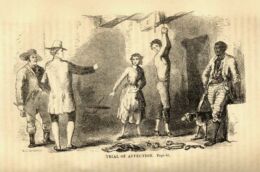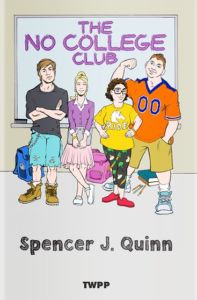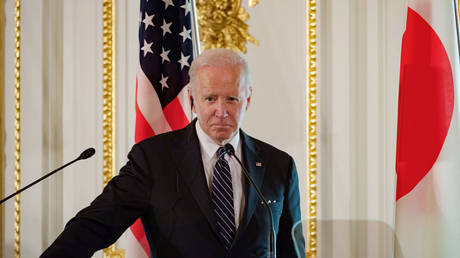Slavery and the Weak Claim Paradox

Trial of Affection, an illustration from Richard Hildreth, The White Slave; or, Memoirs of a Fugitive (1852).
1,869 words
One of the trump cards the Left has over the Right is how it asserts the absolute equivalence of slavery and evil. This is an axiom for the Left, and a holy axiom at that. Leftists will not allow this axiom to be questioned because it is one of their prime sources of power. Like the Ark of the Covenant, it represents Man’s intersection with his egalitarian god. It also gives the Left sanction to uproot one of the main bulwarks of the Right: tradition.
Much of tradition is the wisdom accumulated from trial and error over the course of centuries. Healthy societies for the most part identify with and follow their traditions. The Left, however, can use slavery to pry a people away from their traditions in order to make them weaker and more easily conquered. After all, why would someone blindly follow a tradition when slavery — which is inherently evil — can also be called a tradition?
This is how using the memory of slavery as a weapon increases the Left’s power. Anyone who dares question the inherent evil of slavery — and in particular, white-on-black slavery as practiced in the New World during the seventeenth, eighteenth, and nineteenth centuries — becomes an existential threat to the Left. In a world which refuses to condemn this kind of slavery, the Left, as the coalition of anti-white ideologues we know today, could not exist. Thus, anyone who challenges the link between slavery and evil becomes a thought criminal and must be silenced at all costs.
This vociferous reaction, however, is polemical rather than factual. This becomes evident when we realize that the Left will brand a person a thought criminal on these grounds even when they make pious pains to condemn slavery. All a person would have to do is speak admiringly about — or pointedly not condemn — a society which countenanced slavery, such as the antebellum South. The Left, being more cunning than intelligent, will assume the rest. For example, attending the Charlottesville Unite the Right rally in 2017 merely to defend a statue of Robert E. Lee was no defense against the Left when being branded a thought criminal along with everyone else who was there.
Thus, if the slavery-is-evil trope is the source of the Left’s power, then challenge it we must. I would go so far as to say that no one can unilaterally condemn slavery as evil and still be on the Right without also condemning other forms of historical exploitation which were just as bad, if not sometimes worse than slavery. As far slavery itself goes, the Right must always be prepared to argue that other forms of slavery such as black-on-black, Muslim-on-black, and Muslim-on-white were often worse than what went on in the antebellum South. Once this is established, then white people cannot be singled out as particularly evil or oppressive, which could only be a boon for the Right. If a person continues to name slavery in the American South as the greatest evil despite all evidence to the contrary, then we must tell him that he’s not thinking for himself; he is paying homage to the Left, whether he realizes it or not.
As for the evidence, it is not terribly hard to accumulate as long as we adhere to what I call the Weak Claim Paradox. I initially employed this concept when debunking another primary source of the Left’s power: the Jewish Holocaust and anti-Semitism narrative pushed by Leftist Jews (whom I refer to as Liberal Diaspora Jews, or LDJs). As I wrote for The Occidental Observer:
Combating an aspect of the LDJ narrative with a strong opposing narrative succeeds inversely to the time the narrative in question has had to metastasize across gentile populations. The more time a narrative has had, the more difficult it is to argue against it with a strong opposite claim. Paradoxically, weaker claims would serve better against deeply entrenched LDJ narratives. I call this the Weak Claim Paradox.

You can buy Spencer J. Quinn’s Solzhenitsyn and the Right here.
Essentially, strong claims such as the idea that the Nazis were a net force for good or that the Jewish Holocaust has been wildly exaggerated threaten the Left’s power less than weak — yet equally true — claims that the Nazis and the Jewish Holocaust weren’t quite as bad as the Bolsheviks, the terror famines, and the Gulag Archipelago. The former tries to rip a deep-rooted sapling out of the ground all at once, and the other tries to wriggle it free over time — which is the more sensible approach.
The same approach should be taken toward slavery. Never should people on the Right attest that slavery is good or call for its return in the civilized world. Never should people on the Right invoke race realism or the right of conquest to justify slavery — especially of blacks. Instead, they should employ the weaker claim that slavery in the American South was no worse than indentured servitude or the capitalistic exploitation of workers, or the many contemporaneous forms of slavery around the world. Since many today derive their thinking from the Left’s holy tabernacle of equality, strong claims about the white race’s superiority or the black race’s incapacity for self-government will fall on deaf ears. The Left has inoculated its base against such claims. But it has not inoculated its base against perceiving the cruelty and horror of these other systems — of which most educated Westerners are completely unaware.
This is the first step in loosening the Left’s deep-rooted power.
One excellent source which bolsters such weak, yet effective claims is Michael Hoffman’s 1991 book They Were White and They Were Slaves, which covers not only the often bestial treatment of whites as indentured servants in the New World, but also the miserable lot of white urban workers in England and the United States, especially children. Below he quotes Brian Inglis from his 1971 book Poverty and the Industrial Revolution:
British children comprised a majority of the factory work force, “from two-thirds to three-quarters of the workers in the early factories . . . they were lucky if they earned a half-penny an hour. For this they were made to work as children had never been made to work before.”
Later, Hoffman writes:
This was labor without any breaks, “unceasing labor.” When the children fell asleep at the machines, they were lashed into wakefulness with a whip alternately known as a thong or strap. If they arrived late to the factory, talked to another child or committed some other infraction they were beaten with an iron bar known as a billy-roller.
While Hoffman wisely does not downplay black slavery, he does demonstrate how indentured servants were often kidnapped and thrust into servitude — with the full approval of the British government. Because they were never properly bought and paid for, these servants were thus valued less and often treated worse by their masters than black slaves. He also reveals a great deal of scholarship which compares white indentured servitude to black slavery, and finds them equivalent:
Ships carrying White [sic] slaves to America often lost half their slaves to death. According to historian Sharon V. Salinger, “Scattered data reveal that the mortality for servants at certain times equaled that for slaves in the ‘middle passage,’ and during other periods actually exceeded the death rate for slaves.” Salinger reports a death rate of ten to twenty percent over the entire 18th century for Black [sic] slaves on board ships enroute to America compared with a death rate of 25% for White [sic] slaves enroute to America.
And the number of white indentured servants was not trivial either:
Hundreds of thousands of Whites [sic] in colonial America were owned outright by their masters and died in slavery. They had no control over their own lives and were auctioned on the block and examined like livestock, exactly like Black slaves, with the exception that these Whites [sic] were enslaved by their own race.

You can buy Spencer J. Quinn’s young adult novel The No College Club here.
Simon Webb, in his 2020 book The Forgotten Slave Trade, dives into the centuries-long exploitation of Europe’s white population by Muslim slave raiders, who were acting more or less in the service of the Ottoman Empire. He repeat historian Robert Davis’ claim that over a million European whites had been abducted in the Barbary slave trade from 1500 to 1800. He portrays the treatment of these slaves as every bit as brutal and cruel as white-on-black slavery, but like Hoffman, never minimizes black suffering. He doesn’t need to. Passages such as the following regarding the Muslim need for white eunuch slaves demonstrate quite clearly that white-on-black slavery was not a singular evil:
The solution to the difficulties, both practical and religious, which prevented Muslims from making their own eunuchs was to engage slave traders in Europe to provide a ready-made product which could then be purchased, already castrated and in good health. These eunuchs were manufactured in Europe, from pre-pubescent European boys and the history of this vile trade had almost been forgotten today.
Whatever other horrors the Atlantic slave trade entailed, routine castration was never one of them. It is true that black slaves in America and the Caribbean were from time to time castrated, but this was never a common occurrence and was usually inflicted due to exceptional circumstances, such as an accusation of rape. With the act of castration so likely to result in death, it would have made no sense to hazard the lives of slaves in this way too frequently. In Europe, by contrast, the castration of white slaves was carried out on an industrial scale.
Webb also agree with Hoffman about the comparable numbers of white and black slaves, although in Webb’s case, these were slaves who never left the Old World:
The idea that the Atlantic slave trade might not have been the greatest or worst trafficking in slaves of which we know is a novel one for most people. Certainly, for a generation which has been raised on horror stories of what has come to be known as the slave trade, it will come as a shock to discover that there was nothing to distinguish that slave trade from any other. Neither the numbers involved nor the treatment of the slaves is remarkable when considered in a wider historical context.
If anything, the numbers of those involved in the Atlantic slave trade were remarkably low compared to the death counts wrought by Arab-on-black slavery from around the same time. According to Webb:
It has been estimated that between 80,000 and 100,000 Africans died each year as a direct result of the Arab slave trade. David Livingstone thought that ten times as many people died in this way. If so, then in the nineteenth century alone, well over 10 to 20 million people might have lost their lives in this way.
If the anti-white Left wishes to deplore slavery, that’s fine. But when Leftists use white-on-black slavery as a political weapon in order to enrich their own power over whites, the Right should employ the Weak Claim Paradox and remind them that they should condemn all slavery, which was just as bad for whites as it was for anyone else — thus unraveling the legitimacy of one of the Left’s primary power sources.



